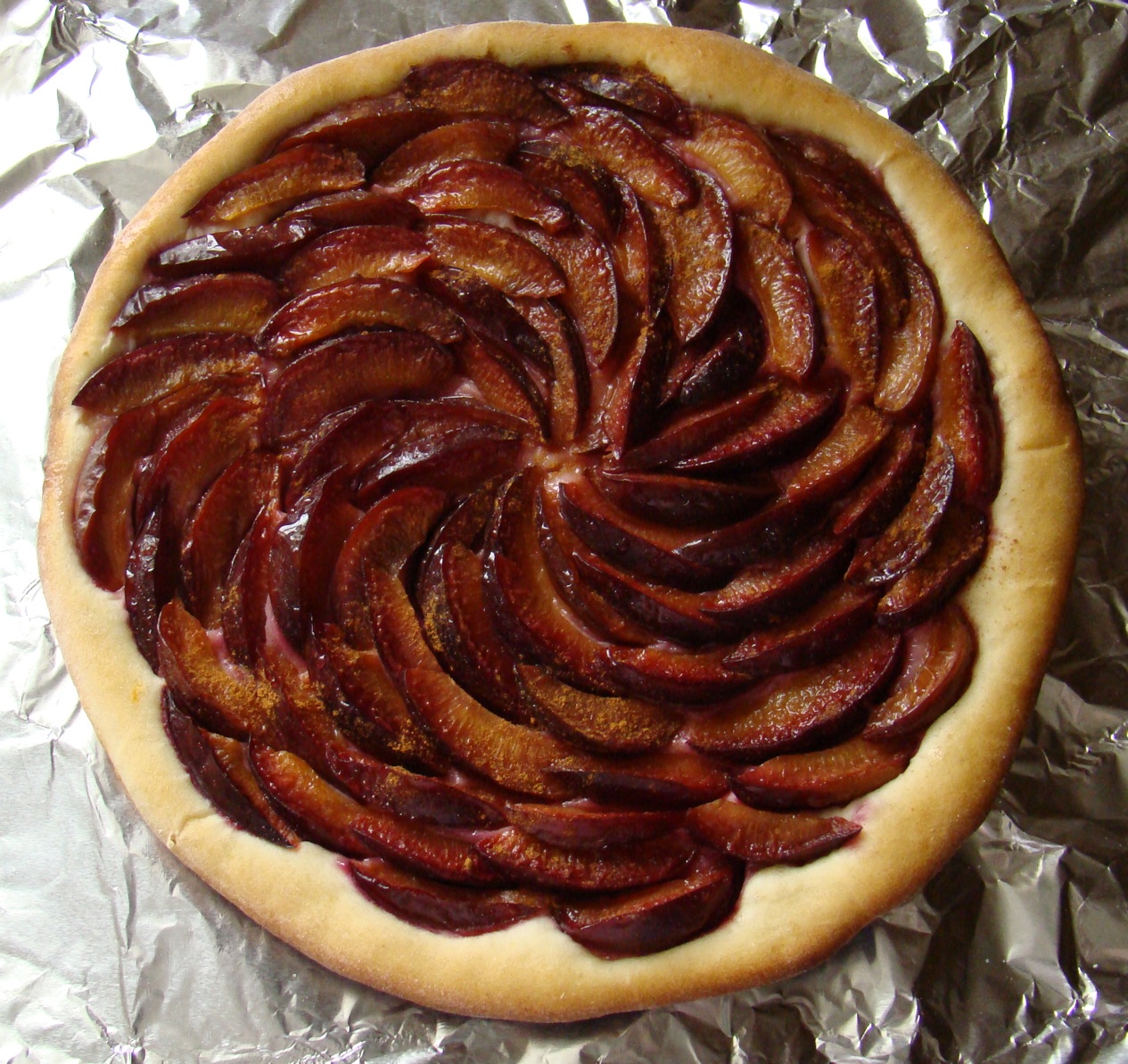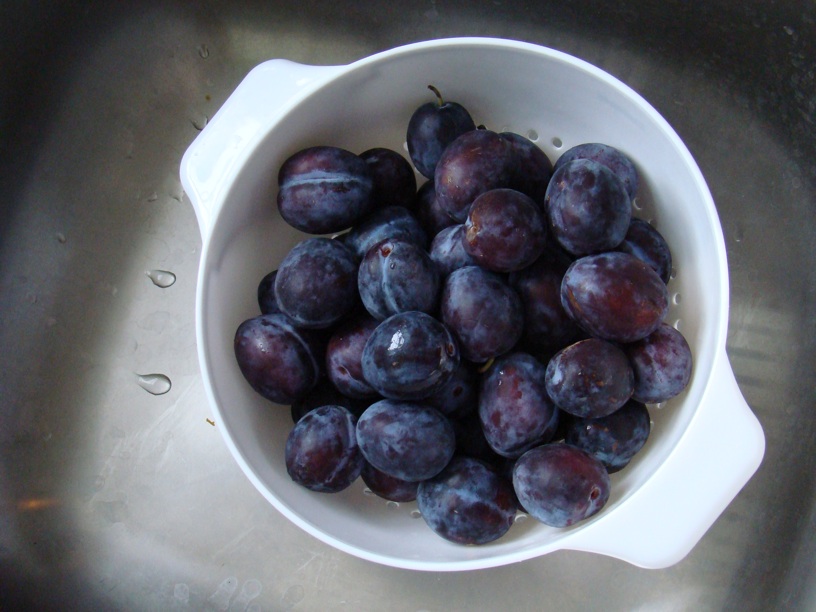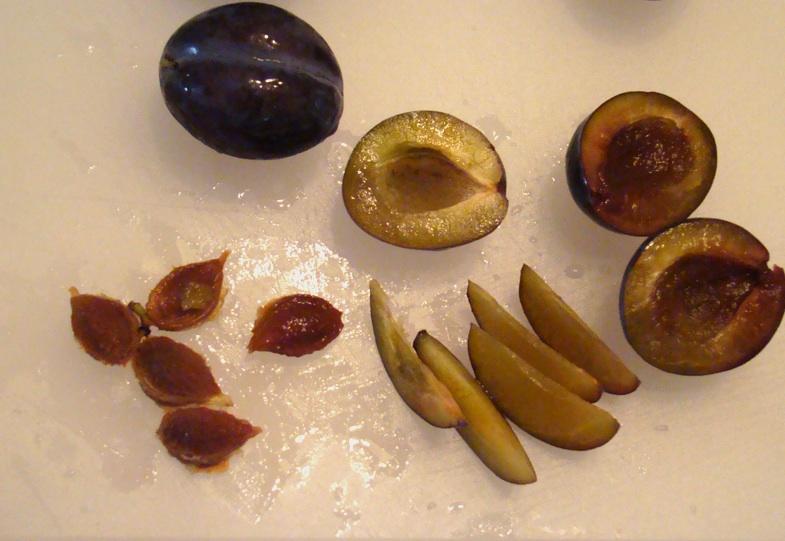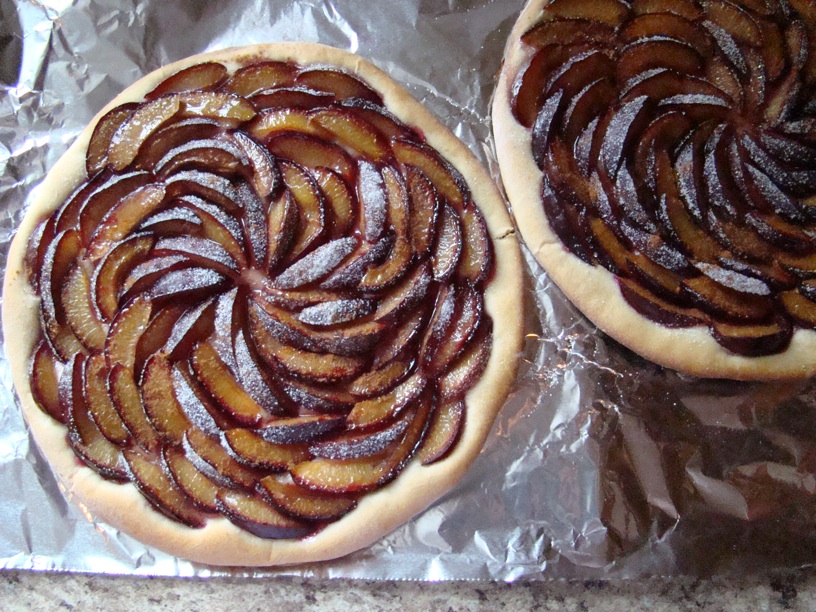Zwetschgenplätz


I have yet to meet anyone else who calls this dessert by our family name. The more common name is Zwetschgendatschi, and it is a staple of Southern German cooking. It is also highly seasonal, because it uses Italian plums (also known as prune plums) instead of more common varieties of plums. In fact, in German the two fruits have entirely different names: Pflaumen are plums, and Zwetschgen are prune plums. Zwetschgen, pictured below, are more elongated than regular plums and much tarter, which makes them fantastic in baking (much in the same way that tart apples are better to bake than sweet apples).

Italian plums are not so easy to find, and their season is short. In late August and early September, I keep my eyes peeled for them at local markets and supermarkets, and during the one or two weeks when they are available, I snatch up as many as possible.
Zwetschgenplätz freezes well, in case you want to enjoy some out of season. I put a tart, either whole or sliced, into the freezer on a plate or cutting board to keep it flat until it freezes, then hold it in a freezer bag until I want to serve it. The tart can either be wrapped in foil and thawed on low heat in the oven or toaster oven, or partially defrosted in the microwave and then warmed up in the toaster so it doesn't get soggy.
I've never tried this, but Mom says Oma would make an apple version of this dessert by substituting apples for the plums.
| Ingredients | |
| Sweet Yeast Dough | sugar |
| 3 to 4 lbs of Italian plums (aka prune plums) | cinnamon |
I like to make small, round Zwetschgenplätzen, and I will give the instructions for doing it that way here. But Oma used to make the more traditional large rectangle. If you prefer to make rectangles, divide the dough in half, roll it out, and put each half on its own baking pan or cookie sheet.

While you are making the yeast dough and letting it rise, wash the plums and cut them into thin slices. I've found that 10 slices per plum works best for me, so I run my knife around the plum where the crease is to release the pit, then cut each half into five wedges. You can also do this the day before you bake and keep the slices in the fridge.

Divide the dough into six pieces and roll each one into a tight ball. Place the balls of dough on a floured surface, cover them with a dishtowel or plastic wrap, and let them rest for 10 or 15 minutes.
Preheat the oven to 350°F with the racks in the upper and lower thirds of the oven.
Take a ball of dough from under the cover and roll it out into a thin disk, about 8 inches across. Put it on a foil-lined baking sheet. Arrange the plum slices on the dough, leaving a small margin around the outside. I start by making a fan of 12 plum slices in the center, then work my way out toward the edges, using the curve of the plum slices to pack them in tightly so that they still cover the tart after baking, which shrinks them slightly.

Repeat this process for the remaining tarts. If you have a large enough baking sheet, you can get two tarts on the same sheet. Since it takes a while to assemble each tart, I generally move onto the baking phase once one or two tarts are ready.
Bake each tart until the underside of the dough is browned in the center (lift it with a spatula to check), about 20 - 30 minutes. If you are putting multiple batches in the oven in sequence, cycle each batch from the top rack to the bottom rack (or vice versa) when you put the next batch in.
When the tarts come out the oven, move the baking pans onto cooling racks and sprinkle the top with about one tablespoon of sugar and as much cinnamon as looks good to you. The sugar will cause the plums to release some of their juice, which is why you don't put it on until after the tarts come out of the oven. Some juice might spill over the edge, so leave the tarts on the pans (or at least on the foil) while they cool.

To cut the tarts, it is best to use a chopping knife large enough to reach from the edge to the middle of the tart so that you can make your cuts vertically without sliding the blade. Moving the knife horizontally will make a serious mess of the plum slices.
If you won't eat all the Zwetschgenplätz within a few days, it's best to keep it in the refrigerator to make sure the plums don't get moldy. Otherwise, it's fine to leave this out on the counter. Zwetschgenplätz is usually served at room temperature, but you can warm it up if you like.
If I have leftover plum slices and I'm not planning to make more tarts, I put them in a dish and bake them, then mix in sugar and cinnamon and store them in the fridge. They're fantastic mixed into vanilla yogurt, or poured over ice cream, or on pancakes or waffles.